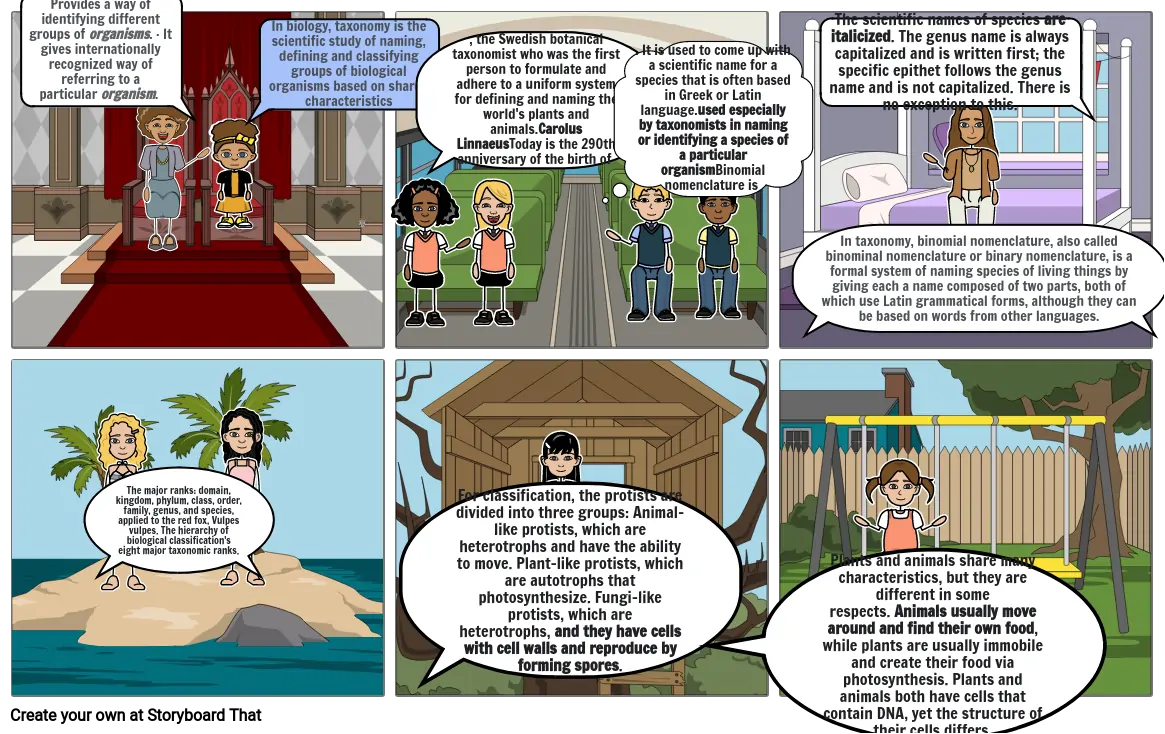classification

Storyboard Text
- Provides a way of identifying different groups of organisms. · It gives internationally recognized way of referring to a particular organism.
- Provides a way of identifying different groups of organisms. · It gives internationally recognized way of referring to a particular organism.
- In biology, taxonomy is the scientific study of naming, defining and classifying groups of biological organisms based on shared characteristics
- , the Swedish botanical taxonomist who was the first person to formulate and adhere to a uniform system for defining and naming the world's plants and animals.Carolus LinnaeusToday is the 290th anniversary of the birth of
- . It is used to come up with a scientific name for a species that is often based in Greek or Latin language.used especially by taxonomists in naming or identifying a species of a particular organismBinomial nomenclature is
- In taxonomy, binomial nomenclature, also called binominal nomenclature or binary nomenclature, is a formal system of naming species of living things by giving each a name composed of two parts, both of which use Latin grammatical forms, although they can be based on words from other languages.
- The scientific names of species are italicized. The genus name is always capitalized and is written first; the specific epithet follows the genus name and is not capitalized. There is no exception to this.
- The major ranks: domain, kingdom, phylum, class, order, family, genus, and species, applied to the red fox, Vulpes vulpes. The hierarchy of biological classification's eight major taxonomic ranks.
- For classification, the protists are divided into three groups: Animal-like protists, which are heterotrophs and have the ability to move. Plant-like protists, which are autotrophs that photosynthesize. Fungi-like protists, which are heterotrophs, and they have cells with cell walls and reproduce by forming spores.
- Plants and animals share many characteristics, but they are different in some respects. Animals usually move around and find their own food, while plants are usually immobile and create their food via photosynthesis. Plants and animals both have cells that contain DNA, yet the structure of their cells differs.
Over 30 Million Storyboards Created

